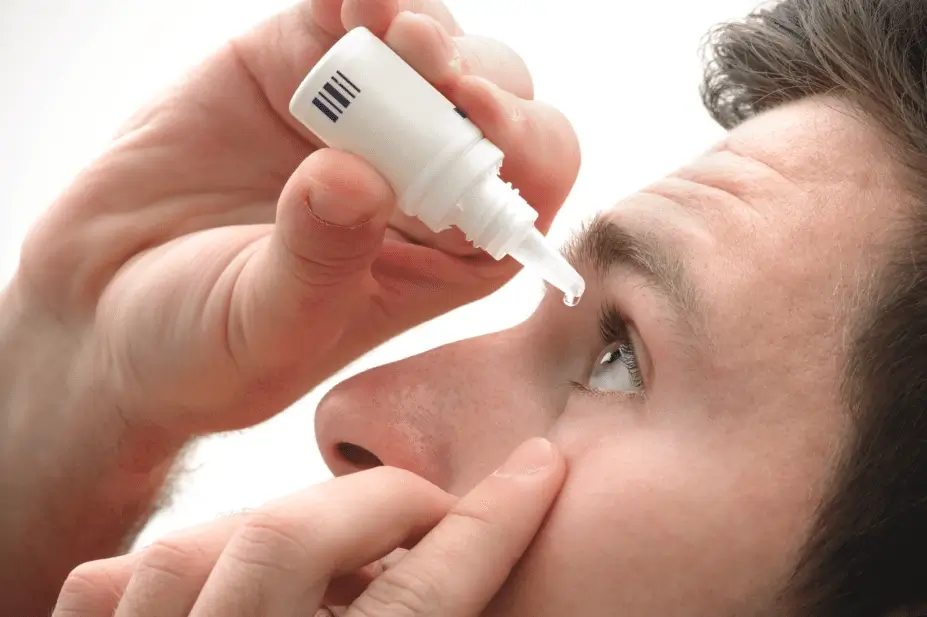Only for Licensed Professionals
Only for Licensed Professionals
.webp)
What Is Tobradex Used For?
Nina Petrovic
Last Updated On: September 1, 2025
Eye infections are more common than many people think. A 2025 systematic review found that bacterial eye infections affect more than half of patients worldwide, with Staphylococcus aureus being the most frequent cause. These infections can lead to redness, swelling, and discomfort, and if left untreated, may result in more serious complications.
One medication often prescribed in these cases is Tobradex, a treatment that combines two active ingredients to address both infection and inflammation. Its dual approach makes it a common choice in managing certain eye conditions, including those that arise after surgery or injury.
In this article, we’ll explore what Tobradex is used for, how it works, and important safety considerations to help you understand when and why it may be recommended.
Key Takeaways
- Tobradex is indicated for steroid-responsive inflammatory eye conditions where there is a bacterial infection or risk of one.
- It combines tobramycin (antibiotic) and dexamethasone (corticosteroid), addressing both infection and inflammation in a single treatment.
- The antibiotic is active against a wide range of bacteria, including Staphylococcus aureus, Streptococcus pneumoniae, and Haemophilus influenzae.
- Ophthalmologists may prescribe Tobradex after certain eye surgeries or in complex eye conditions, based on clinical judgment.
- The medication is not suitable for viral or fungal infections, and those with acute purulent infections require careful monitoring.
- Safe use depends on following the prescribed dosage, shaking the suspension before use, avoiding contamination, and attending follow-up appointments.
About: Operating since 2016, Med Supply Solutions is known for being one of the industry’s top and trusted suppliers of cosmetic and viscosupplementation products. If you’re looking to buy Tobradex online, contact our sales department for more information.

Approved Indications and Uses of Tobradex

Tobradex treats steroid-responsive inflammatory eye conditions when doctors require a corticosteroid and when a superficial bacterial infection exists or poses a risk. This makes it useful in a range of eye problems where both inflammation and bacteria are concerns. Conditions may include blepharitis, conjunctivitis, and keratitis, all of which can cause pain, swelling, and redness that interfere with daily life.
By combining an antibacterial agent with an anti-inflammatory corticosteroid, Tobradex not only helps relieve uncomfortable symptoms like redness, swelling, and irritation, but also works to prevent the growth of harmful bacteria that could worsen the condition.
Ophthalmologists may also prescribe Tobradex after certain eye surgeries to reduce inflammation and lower the risk of bacterial complications. While cataract surgery is a typical example, its use depends on the surgeon’s clinical judgment and the patient’s individual needs. The broad adoption of Tobradex in both routine and post-surgical care highlights its reputation as a reliable treatment option in ophthalmology.
Role of Tobramycin and Dexamethasone in Tobradex Treatment

The effectiveness of Tobradex comes from its two key ingredients, which work together to address both infection and inflammation—a combination that is often critical in eye care.
- Tobramycin (antibiotic): A part of the aminoglycoside class, tobramycin targets harmful bacteria by inhibiting protein synthesis, a crucial process for bacterial survival. It is particularly active against Gram-negative organisms and also has activity against certain Gram-positive bacteria, including Staphylococcus aureus and Streptococcus pneumoniae. This broad coverage helps reduce the risk of infection spreading in delicate eye tissues.
- Dexamethasone (corticosteroid): This component addresses the inflammatory response. By inhibiting the release of inflammatory cytokines and reducing capillary permeability, dexamethasone helps calm swelling, redness, and irritation. This not only eases discomfort but also supports clearer vision during the healing process.
- Combined Benefits: When prescribed together in Tobradex, these ingredients create a dual-action therapy. Tobramycin suppresses bacterial growth, while dexamethasone relieves inflammation. This combination can reduce the need for multiple medications, enhance compliance, and facilitate a faster recovery.
Understanding Tobradex’s generic name and its unique blend of active ingredients helps explain why eye specialists worldwide rely on it. Rather than acting only as an antibiotic or only as a steroid, it delivers a carefully balanced therapy that targets two common challenges in eye care at the same time.
Conditions Where Tobradex Is Not Recommended
Despite its broad usefulness, Tobradex is not appropriate for every patient or every eye condition. Doctors do not recommend it for viral eye infections, such as herpes simplex keratitis, or for fungal eye infections. This is because the corticosteroid component can worsen these conditions by suppressing the immune response.
In acute purulent infections, steroids may mask the symptoms or allow the infection to progress more aggressively. For this reason, patients using Tobradex in such cases require close medical monitoring, rather than an outright avoidance in every situation. This careful approach helps ensure that infection control is not compromised while managing inflammation.
Patients with known allergies to aminoglycosides or corticosteroids should also avoid Tobradex, as allergic reactions can cause redness, itching, swelling, or even more serious complications. This is why ophthalmologists take a detailed medical history before prescribing it. Knowing what Tobradex is used for also means understanding when it should be avoided to protect patient safety.
Clinical Guidelines for Safe and Effective Use of Tobradex
When prescribed, use Tobradex exactly as directed by an ophthalmologist. It is available in two forms: ophthalmic suspension (eye drops) and ophthalmic ointment. Practitioners can also tailor the dosage and duration to each patient’s condition.
Because overuse or long-term use may lead to complications such as increased eye pressure, cataract formation, or secondary infections, patients are strongly advised not to self-medicate and to follow professional guidance.
Key Safety Practices
- Wash hands thoroughly before applying the drops or ointment.
- Shake the suspension bottle well before use to ensure even distribution.
- Avoid touching the dropper tip to the eye or any surface to prevent contamination.
- Follow the prescribed frequency and duration without skipping or doubling doses.
- Do not stop treatment suddenly without medical advice.
- Attend follow-up visits so the ophthalmologist can check eye pressure and healing progress.
By following these precautions, patients gain the full benefit of Tobradex while minimizing risks. When used responsibly, it provides reliable relief and helps protect vision during recovery.
Conclusion
Tobradex is a trusted ophthalmic medication prescribed for eye conditions where both inflammation and bacterial infection are present or likely to develop. Combining tobramycin with dexamethasone provides a balanced approach that controls harmful bacteria while soothing the discomfort caused by swelling and redness.
Patients often ask, “What is Tobradex used for?” The answer is straightforward: it is designed for infections with inflammation, whether related to eye disease, injury, or recovery from surgery.
Its benefits are significant, but they rely on careful prescribing and correct use. Misuse or overuse can increase the risk of complications, which is why close medical supervision is essential. With proper guidance, Tobradex remains a cornerstone of ophthalmic care, offering both protection and relief for patients facing complex eye conditions.
FAQs
1. How does Tobradex work in eye care?
Doctors prescribe Tobradex for bacterial eye infections with inflammation. They often use it after surgery, for eye injuries, or in certain inflammatory conditions at risk for infection.
2. Can a patient use Tobradex for viral or fungal infections?
No. Do not use Tobradex for viral or fungal infections, since the steroid component may worsen those conditions.
3. What are the common side effects of Tobradex?
Some patients may experience temporary irritation, blurred vision, redness, or increased eye pressure. Long-term use can raise the risk of cataracts or glaucoma, making follow-up appointments important.
References
Tilahun M, Gedefie A, Sharew B, Debash H, Shibabaw A. Prevalence of bacterial eye infections and multidrug resistance patterns among eye infection suspected patients in Ethiopia: a systematic review and meta-analysis. BMC Infectious Diseases. 2025;25(1). doi:10.1186/s12879-025-11095-y
Scoper SV, Kabat AG, Owen GR, et al. Ocular distribution, bactericidal activity, and settling characteristics of TobraDex® ST ophthalmic suspension compared with TobraDex® ophthalmic suspension. Adv Ther. 2008;25(2):77–88.
Products
Cart
Log In
Newsletter
Subscribe for exclusive offers and updates on new arrivals
Share feedback at:
Working Hours
MON - SUN 9AM to 6PM EST
The Most Popular Brands
Med Supply Solutions
Support
Secure checkout is guaranteed with full adherence to PCI DSS payment standards.
Products listed here are guaranteed authentic and manufacturer-sourced.
Pay easily with trusted providers


*Google and Apple Pay are currently only available via a direct link provided by your account manager.
Copyright 2025. Med Supply Solutions